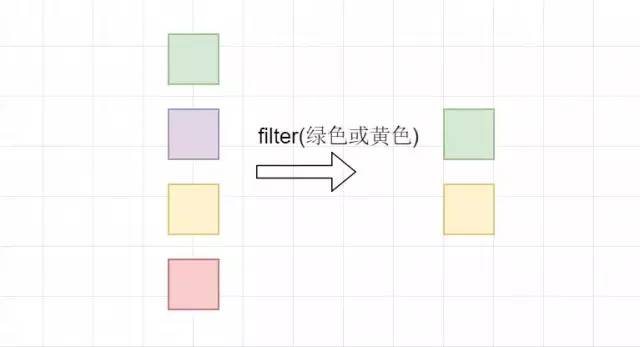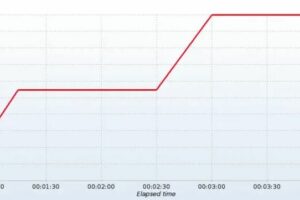java lambda编程
java8最大的特性就是引入Lambda表达式,即函数式编程,可以将行为进行传递。总结就是:使用不可变值与函数,函数对不可变值进行处理,映射成另一个值。
二、java重要的函数式接口
1、什么是函数式接口
函数接口是只有一个抽象方法的接口,用作 Lambda 表达式的类型。使用@FunctionalInterface注解修饰的类,编译器会检测该类是否只有一个抽象方法或接口,否则,会报错。可以有多个默认方法,静态方法。
1.1 java8自带的常用函数式接口。

public class Test {
public static void main(String[] args) {
Predicate<Integer> predicate = x -> x > 185;
Student student = new Student("9龙", 23, 175);
System.out.println(
"9龙的身高高于185吗?:" + predicate.test(student.getStature()));
Consumer<String> consumer = System.out::println;
consumer.accept("命运由我不由天");
Function<Student, String> function = Student::getName;
String name = function.apply(student);
System.out.println(name);
Supplier<Integer> supplier =
() -> Integer.valueOf(BigDecimal.TEN.toString());
System.out.println(supplier.get());
UnaryOperator<Boolean> unaryOperator = uglily -> !uglily;
Boolean apply2 = unaryOperator.apply(true);
System.out.println(apply2);
BinaryOperator<Integer> operator = (x, y) -> x * y;
Integer integer = operator.apply(2, 3);
System.out.println(integer);
test(() -> "我是一个演示的函数式接口");
}
/**
* 演示自定义函数式接口使用
*
* @param worker
*/
public static void test(Worker worker) {
String work = worker.work();
System.out.println(work);
}
public interface Worker {
String work();
}
}
//9龙的身高高于185吗?:false
//命运由我不由天
//9龙
//10
//false
//6
//我是一个演示的函数式接口以上演示了lambda接口的使用及自定义一个函数式接口并使用。下面,我们看看java8将函数式接口封装到流中如何高效的帮助我们处理集合。
注意:Student::getName例子中这种编写lambda表达式的方式称为方法引用。格式为ClassNmae::methodName。是不是很神奇,java8就是这么迷人。
示例:本篇所有示例都基于以下三个类。OutstandingClass:班级;Student:学生;SpecialityEnum:特长。
1.2 惰性求值与及早求值
惰性求值:只描述Stream,操作的结果也是Stream,这样的操作称为惰性求值。惰性求值可以像建造者模式一样链式使用,最后再使用及早求值得到最终结果。
及早求值:得到最终的结果而不是Stream,这样的操作称为及早求值。
2、常用的流
2.1 collect(Collectors.toList())
将流转换为list。还有toSet(),toMap()等。及早求值。
public class TestCase {
public static void main(String[] args) {
List<Student> studentList = Stream.of(new Student("路飞", 22, 175),
new Student("红发", 40, 180),
new Student("白胡子", 50, 185)).collect(Collectors.toList());
System.out.println(studentList);
}
}
//输出结果
//[Student{name='路飞', age=22, stature=175, specialities=null},
//Student{name='红发', age=40, stature=180, specialities=null},
//Student{name='白胡子', age=50, stature=185, specialities=null}]2.2 filter
顾名思义,起过滤筛选的作用。内部就是Predicate接口。惰性求值。

比如我们筛选出出身高小于180的同学。
public class TestCase {
public static void main(String[] args) {
List<Student> students = new ArrayList<>(3);
students.add(new Student("路飞", 22, 175));
students.add(new Student("红发", 40, 180));
students.add(new Student("白胡子", 50, 185));
List<Student> list = students.stream()
.filter(stu -> stu.getStature() < 180)
.collect(Collectors.toList());
System.out.println(list);
}
}
//输出结果
//[Student{name='路飞', age=22, stature=175, specialities=null}]2.3 map
转换功能,内部就是Function接口。惰性求值

public class TestCase {
public static void main(String[] args) {
List<Student> students = new ArrayList<>(3);
students.add(new Student("路飞", 22, 175));
students.add(new Student("红发", 40, 180));
students.add(new Student("白胡子", 50, 185));
List<String> names = students.stream().map(student -> student.getName())
.collect(Collectors.toList());
System.out.println(names);
}
}
//输出结果
//[路飞, 红发, 白胡子]例子中将student对象转换为String对象,获取student的名字。
2.4 flatMap
将多个Stream合并为一个Stream。惰性求值
public class TestCase {
public static void main(String[] args) {
List<Student> students = new ArrayList<>(3);
students.add(new Student("路飞", 22, 175));
students.add(new Student("红发", 40, 180));
students.add(new Student("白胡子", 50, 185));
List<Student> studentList = Stream.of(students,
asList(new Student("艾斯", 25, 183),
new Student("雷利", 48, 176)))
.flatMap(students1 -> students1.stream()).collect(Collectors.toList());
System.out.println(studentList);
}
}
//输出结果
//[Student{name='路飞', age=22, stature=175, specialities=null},
//Student{name='红发', age=40, stature=180, specialities=null},
//Student{name='白胡子', age=50, stature=185, specialities=null},
//Student{name='艾斯', age=25, stature=183, specialities=null},
//Student{name='雷利', age=48, stature=176, specialities=null}]调用Stream.of的静态方法将两个list转换为Stream,再通过flatMap将两个流合并为一个。
2.5 max和min
我们经常会在集合中求最大或最小值,使用流就很方便。及早求值。
public class TestCase {
public static void main(String[] args) {
List<Student> students = new ArrayList<>(3);
students.add(new Student("路飞", 22, 175));
students.add(new Student("红发", 40, 180));
students.add(new Student("白胡子", 50, 185));
Optional<Student> max = students.stream()
.max(Comparator.comparing(stu -> stu.getAge()));
Optional<Student> min = students.stream()
.min(Comparator.comparing(stu -> stu.getAge()));
//判断是否有值
if (max.isPresent()) {
System.out.println(max.get());
}
if (min.isPresent()) {
System.out.println(min.get());
}
}
}
//输出结果
//Student{name='白胡子', age=50, stature=185, specialities=null}
//Student{name='路飞', age=22, stature=175, specialities=null}max、min接收一个Comparator(例子中使用java8自带的静态函数,只需要传进需要比较值即可。)并且返回一个Optional对象,该对象是java8新增的类,专门为了防止null引发的空指针异常。
可以使用max.isPresent()判断是否有值;可以使用max.orElse(new Student()),当值为null时就使用给定值;也可以使用max.orElseGet(() -> new Student());这需要传入一个Supplier的lambda表达式。
2.6 count
统计功能,一般都是结合filter使用,因为先筛选出我们需要的再统计即可。及早求值
public class TestCase {
public static void main(String[] args) {
List<Student> students = new ArrayList<>(3);
students.add(new Student("路飞", 22, 175));
students.add(new Student("红发", 40, 180));
students.add(new Student("白胡子", 50, 185));
long count = students.stream().filter(s1 -> s1.getAge() < 45).count();
System.out.println("年龄小于45岁的人数是:" + count);
}
}
//输出结果
//年龄小于45岁的人数是:22.7 reduce
reduce 操作可以实现从一组值中生成一个值。在上述例子中用到的 count 、 min 和 max 方法,因为常用而被纳入标准库中。事实上,这些方法都是 reduce 操作。及早求值。

public class TestCase {
public static void main(String[] args) {
Integer reduce = Stream.of(1, 2, 3, 4).reduce(0, (acc, x) -> acc+ x);
System.out.println(reduce);
}
}
//输出结果
//10我们看得reduce接收了一个初始值为0的累加器,依次取出值与累加器相加,最后累加器的值就是最终的结果。
三、高级集合类及收集器
3.1 转换成值
收集器,一种通用的、从流生成复杂值的结构。只要将它传给 collect 方法,所有的流就都可以使用它了。标准类库已经提供了一些有用的收集器,以下示例代码中的收集器都是从 java.util.stream.Collectors 类中静态导入的。
public class CollectorsTest {
public static void main(String[] args) {
List<Student> students1 = new ArrayList<>(3);
students1.add(new Student("路飞", 23, 175));
students1.add(new Student("红发", 40, 180));
students1.add(new Student("白胡子", 50, 185));
OutstandingClass ostClass1 = new OutstandingClass("一班", students1);
//复制students1,并移除一个学生
List<Student> students2 = new ArrayList<>(students1);
students2.remove(1);
OutstandingClass ostClass2 = new OutstandingClass("二班", students2);
//将ostClass1、ostClass2转换为Stream
Stream<OutstandingClass> classStream = Stream.of(ostClass1, ostClass2);
OutstandingClass outstandingClass = biggestGroup(classStream);
System.out.println("人数最多的班级是:" + outstandingClass.getName());
System.out.println("一班平均年龄是:" + averageNumberOfStudent(students1));
}
/**
* 获取人数最多的班级
*/
private static OutstandingClass biggestGroup(Stream<OutstandingClass> outstandingClasses) {
return outstandingClasses.collect(
maxBy(comparing(ostClass -> ostClass.getStudents().size())))
.orElseGet(OutstandingClass::new);
}
/**
* 计算平均年龄
*/
private static double averageNumberOfStudent(List<Student> students) {
return students.stream().collect(averagingInt(Student::getAge));
}
}
//输出结果
//人数最多的班级是:一班
//一班平均年龄是:37.666666666666664maxBy或者minBy就是求最大值与最小值。
3.2 转换成块
常用的流操作是将其分解成两个集合,Collectors.partitioningBy帮我们实现了,接收一个Predicate函数式接口。

将示例学生分为会唱歌与不会唱歌的两个集合。
public class PartitioningByTest {
public static void main(String[] args) {
//省略List<student> students的初始化
Map<Boolean, List<Student>> listMap = students.stream().collect(
Collectors.partitioningBy(student -> student.getSpecialities().
contains(SpecialityEnum.SING)));
}
}3.3 数据分组
数据分组是一种更自然的分割数据操作,与将数据分成 ture 和 false 两部分不同,可以使用任意值对数据分组。Collectors.groupingBy接收一个Function做转换。

如图,我们使用groupingBy将根据进行分组为圆形一组,三角形一组,正方形一组。
例子:根据学生第一个特长进行分组
public class GroupingByTest {
public static void main(String[] args) {
//省略List<student> students的初始化
Map<SpecialityEnum, List<Student>> listMap =
students.stream().collect(
Collectors.groupingBy(student -> student.getSpecialities().get(0)));
}
}Collectors.groupingBy与SQL 中的 group by 操作是一样的。
3.4 字符串拼接
如果将所有学生的名字拼接起来,怎么做呢?通常只能创建一个StringBuilder,循环拼接。使用Stream,使用Collectors.joining()简单容易。
public class JoiningTest {
public static void main(String[] args) {
List<Student> students = new ArrayList<>(3);
students.add(new Student("路飞", 22, 175));
students.add(new Student("红发", 40, 180));
students.add(new Student("白胡子", 50, 185));
String names = students.stream()
.map(Student::getName).collect(Collectors.joining(",","[","]"));
System.out.println(names);
}
}
//输出结果
//[路飞,红发,白胡子]joining接收三个参数,第一个是分界符,第二个是前缀符,第三个是结束符。也可以不传入参数Collectors.joining(),这样就是直接拼接。
四、总结
本篇主要从实际使用讲述了常用的方法及流,使用java8可以很清晰表达你要做什么,代码也很简洁。本篇例子主要是为了讲解较为简单,大家可以去使用java8重构自己现有的代码,自行领会lambda的奥妙。
本文说的Stream要组合使用才会发挥更大的功能,链式调用很迷人,根据自己的业务去做吧。
扫码领红包 微信赞赏
微信赞赏 支付宝扫码领红包
支付宝扫码领红包











